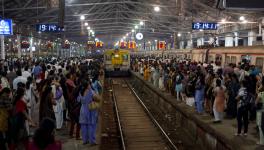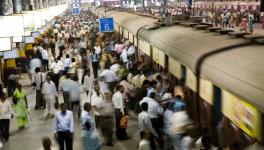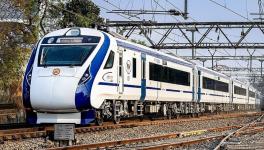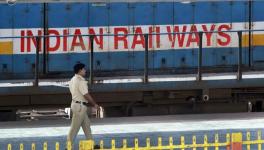IRCTC to Study Heritage Rail Routes to Rope in Private Players
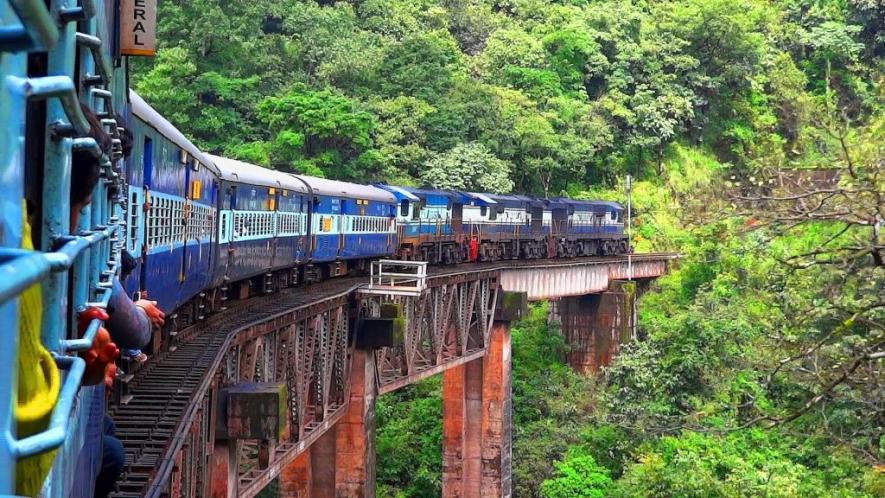
Image Courtesy: Wikipedia.org
New Delhi: The Indian Railways is planning to put up three loss-making heritage routes for sale to private operators after allowing privately-operated passenger trains on two regular busy rail corridors.
According to the latest development, the Railways has asked the Indian Railways Catering and Tourism Corporation to conduct a study of these heritage routes to find out the feasibility of the project for handing over the Darjeeling Himalayan Railway, Nilgiri Mountain Railway and Kalka Shimla Railway to private hands. The United Nations Educational, Scientific and Cultural Organisation (UNESCO) has recognised these three hill railways in India as World Heritage Sites, grouping them as Mountain Railways of India.
The other World Heritage Site that is part of the Indian Railways is the Chhattrapati Shivaji Terminus (Previously known as Victoria Terminus) has not been named under it yet.
IRCTC, which is the public sector undertaking under Indian Railways for catering and ticketing, has also given the responsibility of roping in private players to run passenger trains on Delhi-Lucknow and Mumbai-Shirdi routes. The Tejas Express is to be privately operated in the Delhi-Lucknow route, while the details of the Mumbai-Shirdi route have not been finalised yet.
Interestingly, this move to rope in private players comes despite the Railway Minister Piyush Goyal’s repeated claims in Parliament that there is no proposal to privatise the national public transporter. Even the Indian Railways has claimed that the move is to adopt a Public Private Partnership model with an aim to attract private investment, rather than privatisation.
Also read: Indian Railways Planning to Invite Private Players to Run Trains
However, a better look at the proposed plan shows otherwise. The heritage plan envisages the private players to run special train service after developing these hill routes without violating the heritage laws of the land. “The Railways is in discussion with NITI Aayog to finalise the action plan for commercial utilisation of our heritage routes,” said a senior railway ministry official.
While the total loss in the passenger business has touched Rs 42,000 crore, the Railways is currently spending around Rs 250 crore a year to manage its heritage properties. “We have asked the IRCTC to carry out a feasibility study of these three routes examining the scope of commercial utilisation and development of these routes,” the official said, adding that the idea is to attract more footfall as these sites have great potential of tourist attraction.
The commercial exploitation plan for the heritage routes also envisages allowing private train operators to develop budget hotels, eateries and other tourist facilities while maintaining and preserving the heritage sites. Earlier, the electrical wing of the Railways had attempted to electrify the narrow gauge section of the Kalka-Shimla, which climbs into the hills of Himachal Pradesh, at a cost of about Rs 31.17 crore. However, it was feared that the electrification of the route would affect the heritage value and the plan was scuttled after strong protest against the move within the railways.
The Kalka Shimla Railway, a 96.6 kilometres long, single track working rail link, is an engineering marvel which was built in the mid-19th century to provide transportation services in the highland town of Shimla. The world's highest multi-arc gallery bridge and the world's longest tunnel (at the time of construction) of the KSR were a testimony of the brilliant engineering skills applied to make this a dream a reality.
The Darjeeling Himalayan Railway consists of 88.48 km of 2 feet gauge track that connects New Jalpaiguri with Darjeeling, passing through Ghoom at an altitude of 2,258 metres. The innovative design has six zigzag reverses.
The construction of the Nilgiri Mountain Railway, a 45.88 km long meter-gauge single-track railway was completed in 1908. This railway, scaling an elevation of 326 m to 2,203 m, was built with the latest technology of the time and uses unique rack and pinion traction arrangement to negotiate steep gradient.
Also read: ‘BJP Govt’s Railway Budget Cut a Pointer Towards Privatisation’
These railways are outstanding examples of innovative transportation systems built through difficult terrain, which had great influence on the social and economic development of their respective regions. Even though these railway routes have scope for improving train services and infrastructure development to attract more footfall, whether the move for inviting private players will be conducive for the public remains to be seen. Instead of focusing on increasing state investment, the public transporter is exploring other possible avenues for boosting earnings.
Besides offering various popular routes to private players, there is also a plan to monetise railways stadiums. Another plan for commercial exploitation of rail premises through station redevelopment plan is also currently underway.
Get the latest reports & analysis with people's perspective on Protests, movements & deep analytical videos, discussions of the current affairs in your Telegram app. Subscribe to NewsClick's Telegram channel & get Real-Time updates on stories, as they get published on our website.










